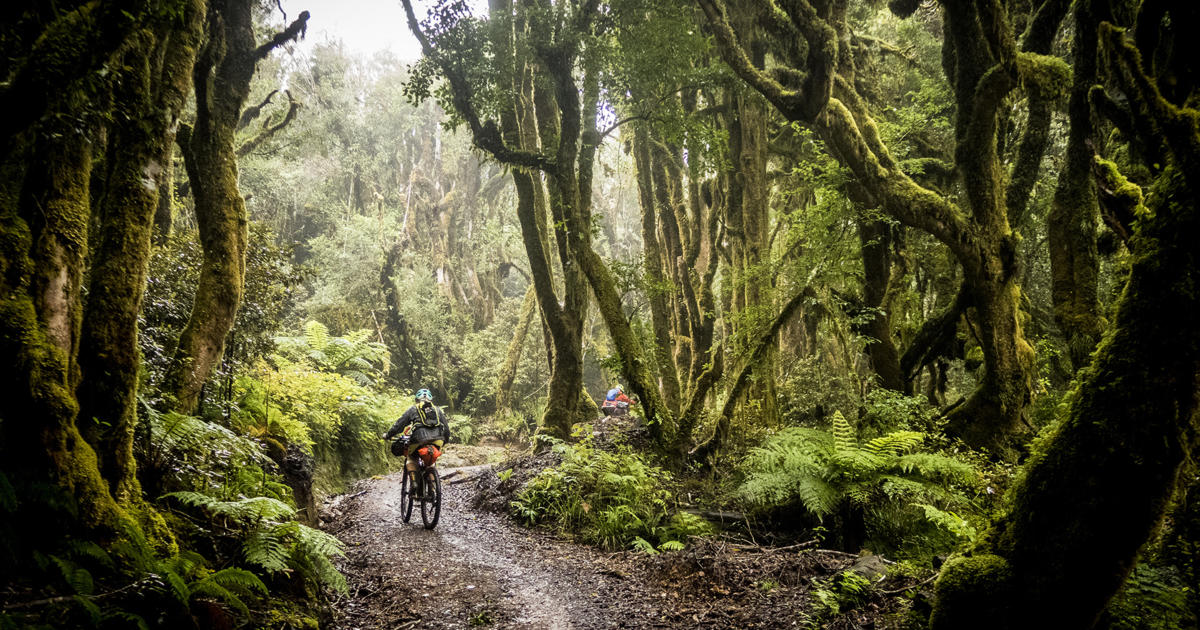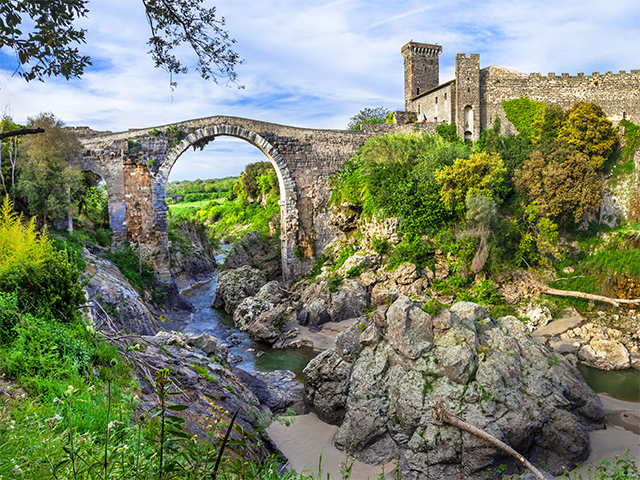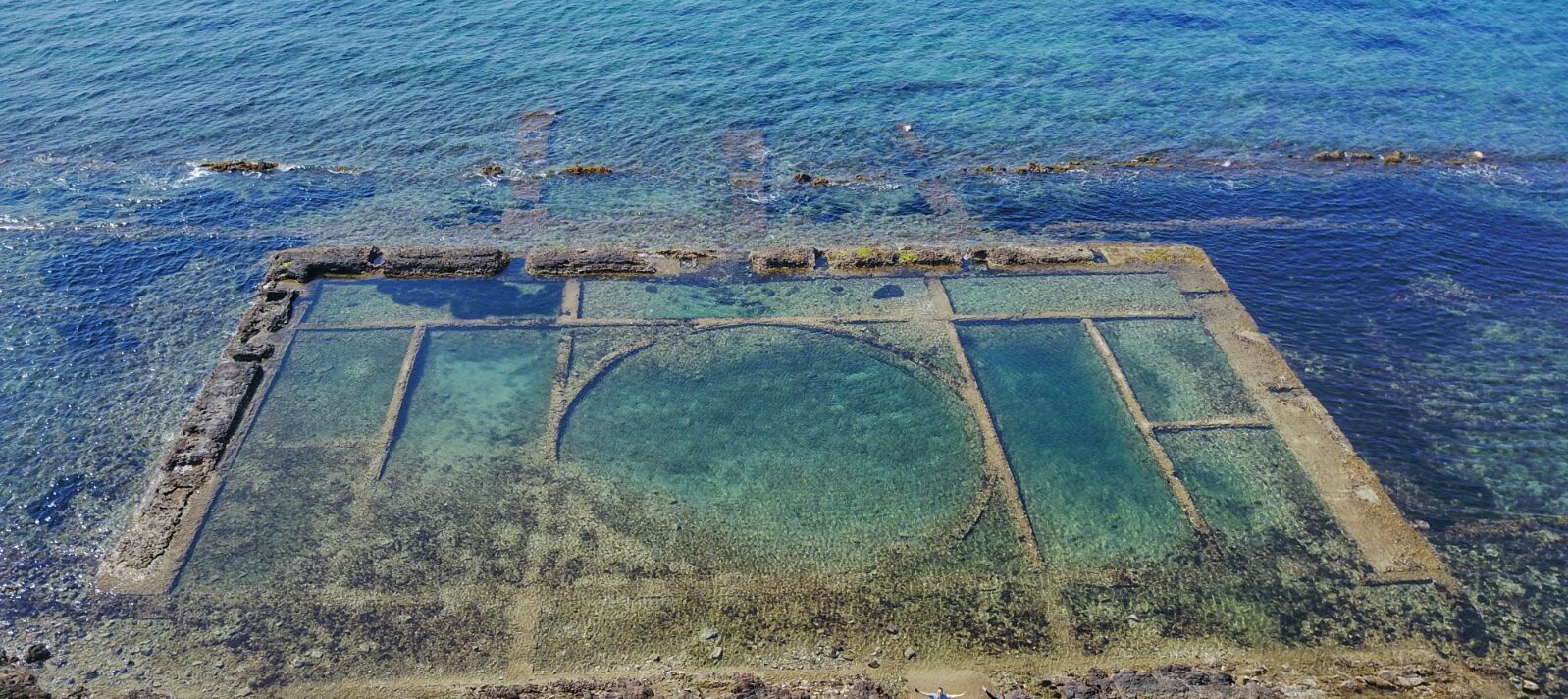Breadcrumbs
Blog
- Details
- Guide Tips
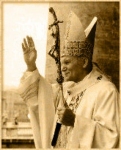 Karol Józef Wojtyła, known as John Paul II since his October 1978 election to the papacy, was born in the Polish town of Wadowice, a small city 50 kilometers from Krakow, on May 18, 1920. He was the youngest of three children born to Karol Wojtyła and Emilia Kaczorowska. His mother died in 1929. His eldest brother Edmund, a doctor, died in 1932 and his father, a non-commissioned army officer died in 1941. A sister, Olga, had died before he was born.
Karol Józef Wojtyła, known as John Paul II since his October 1978 election to the papacy, was born in the Polish town of Wadowice, a small city 50 kilometers from Krakow, on May 18, 1920. He was the youngest of three children born to Karol Wojtyła and Emilia Kaczorowska. His mother died in 1929. His eldest brother Edmund, a doctor, died in 1932 and his father, a non-commissioned army officer died in 1941. A sister, Olga, had died before he was born.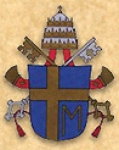
- Details
- Guide Tips
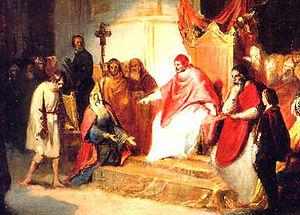 The Walk to Canossa (sometimes called the Way to Canossa; German, Gang nach Canossa; Italian,l'umiliazione di Canossa) refers to both the trek itself of Henry IV of the Holy Roman Empire from Speyer to the fortress at Canossa in Emilia Romagna and to the events surrounding his journey, which took place in and around January 1077.
The Walk to Canossa (sometimes called the Way to Canossa; German, Gang nach Canossa; Italian,l'umiliazione di Canossa) refers to both the trek itself of Henry IV of the Holy Roman Empire from Speyer to the fortress at Canossa in Emilia Romagna and to the events surrounding his journey, which took place in and around January 1077.
When, in his early papacy, Gregory VII attempted to enact reforms to the investiture process, he was met by much resistance from the Holy Roman Emperor. Henry insisted that he reserved the right to "invest" bishops and other clergymen, despite the papal decree. Henry renounced Gregory as pope; in return, Gregoryexcommunicated and deposed Henry, in the Lenten synod of 1076, at Rome. He stated furthermore that, one year from that day, the excommunication would become permanent and irrevocable.
Violence had already broken out at Langensalza on 9 June 1075, suppressed by Henry. Now the patriarch of Aquileia and the papal legate met with German princes at Oppenheim, 16 October 1076, and swore an oath not to recognize Henry unless the ban were lifted. Fearing further rebellion among the German aristocracy, Henry felt he had to have his excommunication lifted. On the suggestion of his adversaries, he arranged to meet with the pope in Augsburg.
Gregory, however, feared that Henry would bring his army and attempt to remove the pope from power. He spent some time on his journey northward from Rome in Italian towns that owed fealty to the Holy Roman Empire, trying to gain support among the people and assessing his strengths among the churchmen.
While still in the northern reaches of present-day Italy, he met Mathilda, Countess of Tuscany. She offered to bring him to a location safe from attack by Henry. They traveled together to the fortress at Canossa and shut themselves inside.
Henry commenced his trip in Speyer and travelling southward from Germany, he found his position precarious. He was still popular among the common people, but his nobles were still threatening to elect a new king. He had to secure his position in the church before the rapidly approaching deadline given by the pope.
Once he crossed the Jura Mountains by the Mont Cenis pass, Henry took on the behavior of penitence. He wore a hair-shirt, the traditional clothing of monks at the time, and allegedly walked barefoot. Many of his entourage also supposedly removed their shoes. In these conditions he crossed the Alps, a long and harsh journey in late January. On 25 January 1077 he reached the gates of Canossa.
When Henry reached Canossa, the Pope ordered that he be refused entry. According to the first-hand accounts of the scene (letters written by both Gregory and Henry in the following years), Henry waited by the gate for three full days. During this time, he allegedly wore only his penitent hair shirt and fasted. Although no contemporary sources report this, it has since been speculated that Henry spent much of his time during these three days in the village at the foot of the hill.
On 28 January the gates were opened for Henry and he was allowed to enter the fortress. Contemporary accounts report that he knelt before Pope Gregory and begged his forgiveness. Gregory absolved Henry and invited him back into the Church. That evening, Gregory, Henry, and Mathilda shared communion in the Cathedral of Saint Nicholas inside the fortress, signaling the official end of Henry's excommunication.
Henry quickly returned to his empire, but Gregory remained with Mathilda at the fortress and in other locations in Tuscany for several months. Later historians speculated upon a romantic or sexual relationship between the two (an accusation sometimes raised by Protestant historians in the 17th century) although if there was ever any evidence for this it has not survived.
The immediate effects of the Canossa meeting were limited. Although Henry was restored to the Church, any expectations that the Pope would restore support of Henry's right to the throne were soon dashed: in March, a small group of powerful Saxon and South German territorial magnates, including the archbishops of Salzburg, Mainz and Magdeburg and several bishops, met at Forchheim and, on the assumption that Henry had irretrievably lost the imperial dignity, repudiated the Salian dynasty's claim to pass the imperial crown by heredity and, in the words of Bruno of Merseburg, present in his bishop's entourage. "that the son of a king, even if he should be preeminently worthy, should become king by a spontaneous election". The Pope confirmed the agreement. His deposition still in effect, Henry was forced into civil war with Duke Rudolph of Swabia. Gregory levied a second excommunication against Henry, who ultimately won the civil war, invaded Rome, and forced Gregory to flee, replacing him with Antipope Clement III.
The meaning in the greater history of Germany and Europe, however, was much more significant. During the Protestant Reformation in the 16th century, Henry was exalted as a defender of the rights of both Germans and opponents of the Pope. Many German Lutherans considered him the "first Protestant" and looked to his example for guidance in their struggle against what they saw as a tyrannical and unjust institution.
Later in German history the event took on a more secular meaning: it came to stand for Germany's refusal to be subjected to any outside power (although still especially, but not exclusively, the Roman Catholic Church). Otto von Bismarck, during his so-called "Kulturkampf," assured his countrymen that "We will not go to Canossa – neither in body nor in spirit!" That is, Germany would stand for itself and not abide any outside interference in its politics, religion or culture.
On the other side, Canossa is remembered in Italy by some historians (like Benedetto Croce) as the first concrete victory of the Pope (who represented the Italian people) against the domination of the Germans after the fall of the Roman Empire. Croce considered Canossa as the initial retreat from Italy of the Holy Roman Empire, starting the Italian Renaissance in which the Germans lost control of northern Italy by the 15th century.
Today, "Canossa" refers to an act of penance or submission. To "go to Canossa" is an expression – used often in German: "nach Canossa gehen", in Danish, Norwegian and Swedish: "Canossavandring" or "Kanossagang", in French: "aller à Canossa", and in Italian: "andare a Canossa" – to describe doing penance, often with the connotation that it is unwilling or coerced. Adolf Hitler, for instance, used the expression to describe his meetings with Bavarian Minister President Heinrich Held after being released from Landsberg Prison, in his bid to have the ban on the Nazi Party lifted.
Discover about Mathilda and see her burial monument at the Vatican Tour
- Details
- Guide Tips
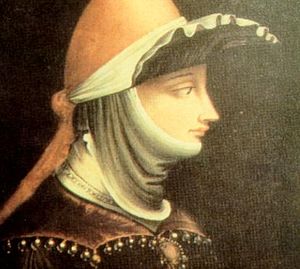 Matilda of Canossa (Italian: Matilde, Latin: Matilda, Mathilda; 1046 – 24 July 1115), called la Gran Contessa or the Great Countess, was an Italian noblewoman, the principal Italian supporter of Pope Gregory VII during the Investiture Controversy. She is one of the few medieval women to be remembered for her military accomplishments. She is called "of Canossa" after the ancestral family castle of Canossa, but in English she is often described as Matilda of Tuscany.
Matilda of Canossa (Italian: Matilde, Latin: Matilda, Mathilda; 1046 – 24 July 1115), called la Gran Contessa or the Great Countess, was an Italian noblewoman, the principal Italian supporter of Pope Gregory VII during the Investiture Controversy. She is one of the few medieval women to be remembered for her military accomplishments. She is called "of Canossa" after the ancestral family castle of Canossa, but in English she is often described as Matilda of Tuscany.
She was the daughter of Boniface III, count of many counties, among them: Reggio, Modena, Mantua, Brescia, and Ferrara. As this string of titles implies, he held a great estate on both sides of the Apennines, though the greater part was in Lombardy and Emilia. Matilda's mother was Beatrice, a daughter of Frederick II, Duke of Upper Lorraine, and of Matilda, daughter of Herman II of Swabia.
Matilda's place of birth is unknown. Mantua, Modena, Cremona, and Verona have all been suggested, though scholarly opinion favours Lucca or the nearby castle of Porcari. Based on her fluency in German, some authors have asserted that she was born in Lorraine, her mother's province. She was her parents' youngest child, but her father was murdered in 1052 and one year later (1053) her older sister Beatrice (namesake of their mother) also died. The elder Beatrice, in order to protect her children's inheritance, married Godfrey the Bearded, a cousin who had been duke of Upper Lorraine before rebelling against the Emperor Henry III. The two were married in 1053 or 1054 in the church of San Pietro at Mantua by Pope Leo IX himself as he returned from a trip to Germany. At the same time Matilda was betrothed to Godfrey the Hunchback, a son of Godfrey the Bearded by a previous marriage and thus her stepbrother.
Henry III was enraged by Beatrice's unauthorised marriage to his enemy and he descended into Italy in the early spring of 1055, arriving at Verona in April and then Mantua by Easter. Beatrice wrote to him seeking a safe-conduct to explain herself; this granted she travelled with her young son Frederick, now margrave of Tuscany, and her mother, Matilda, a sister of the emperor's grandmother Gisela. The younger Matilda was left in either Lucca or Canossa and she may have passed the next few years between those two places in the custody of her stepfather. Initially Henry refused to see Beatrice, but eventually he had her imprisoned in rough conditions, though the young Frederick was treated more appropriately, but he died in Henry's custody nonetheless (the rumours that he was murdered are baseless). The death of her brother made the eight-year-old Matilda the sole heiress of the vast lands of her father, under her mother's guardianship.
With his wife now imprisoned, Godfrey returned to Germany to stir up rebellion and draw Henry out of Italy, but the emperor merely took Beatrice and Frederick with him. Some later historian aver that Beatrice went willingly to see her former homelands. Whatever the case, Godfrey and his ally, Baldwin V of Flanders, had forced the emperor to come to terms of peace by mid-1056 and Godfrey was permitted to return to Italy to administer his stepdaughter's estates. Henry soon died and the council which was held under the direction of Pope Victor II at Cologne formally restored Godfrey to imperial favour. He and Beatrice were back in Italy by late that year.
Matilda's family became heavily involved in the series of disputed papal elections of the last half of the eleventh century. Her stepfather's brother Frederick became Pope Stephen IX, while both of the following two popes, Nicholas II and Alexander II had been Tuscan bishops. Matilda made her first journey to Rome with her family in the entourage of Nicholas in 1059. Her parents' forces were used to protect these popes and fight against anti-popes. Some stories claim the adolescent Matilda took the field in some of these engagements, but no evidence supports this.
Under the tutelage of Arduino della Padule, however, she did learn the military arts, such as horseriding and arms. According to Lodovico Vedriani, two suits of her armour existed in the "Quattro Castelli" until 1622, when they were sold in the market of Reggio. The "Qattro Castelli" were four castles — Montezane,Montelucio, Montevetro, and Bianell (Bibianello) — perched by Matilda atop hills to guard the route up to Canossa. Matilda could speak "the Teuton tongue" (German) and "the beautiful language of the Franks" (French) according to her biographer, Domnizo. She could also write in Latin.
Sometime in this period Matilda finally married her stepbrother Godfrey. Matilda gave birth in 1071 to a daughter, Beatrice. Virtually all current biographies of Matilda assert that the child died in its first year of infancy, however genealogies contemporaneous with Michelangelo Buonarroti claimed that Beatrice survived, and Michelangelo himself claimed to be a descendent of Beatrix and, therefore, Matilda. Michelangelo's claim was supported at the time by the reigning Count of Canossa. The Catholic Church, possibly motivated by its claim against her property, has always asserted that Matilda never had any child at all. Matilda and Godfrey became estranged after Godfrey the Bearded's death in 1069, and he returned to Germany, where he eventually received the duchy of Lower Lorraine.
Conflict between Henry IV and the Papacy
Matilda from the Vita Mathildis, accepting her biography from its monkish author Domnizo and guarded by a man-at-arms (left).
Both Matilda's mother and husband died in 1076, leaving her in sole control of her great Italian patrimony as well as lands in Lorraine, while at the same time matters in the conflict between Pope Gregory VII and the German king Henry IV were at a crisis point. The Pope had excommunicated the King, causing a weakening of Henry's German support. Henry crossed the Alps that winter, appearing early in 1077 as a barefoot penitent in the snow before the gates of Matilda's ancestral castle of Canossa, where the pope was staying.
This famous meeting did not settle matters for long. In 1080 Henry was excommunicated again, and the next year he crossed the Alps, aiming either to get the pope to end the excommunication and crown him emperor, or to depose the pope in favor of someone more co-operative.
Matilda controlled all the western passages over the Apennines, forcing Henry to approach Rome via Ravenna. Even with this route open, he would have difficulties besieging Rome with a hostile territory at his back. Some of his allies defeated Matilda at the battle of Volta Mantovana (near Mantua) in October 1080, and by December the citizens of Lucca, then the capital of Tuscany, had revolted and driven out her ally Bishop Anselm. She is believed to have commissioned the renowned Ponte della Maddalena where the Via Francigena crosses the river Serchio at Borgo a Mozzano just north ofLucca.
In 1081, Matilda suffered some further losses, and Henry formally deposed her in July. This was not enough to eliminate her as a source of trouble, for she retained substantial allodial holdings. She remained as Pope Gregory's chief intermediary for communication with northern Europe even as he lost control of Rome and was holed up in the Castel Sant'Angelo. After Henry had obtained the Pope's seal, Matilda wrote to supporters in Germany only to trust papal messages that came though her.
Henry's control of Rome enabled him to have his choice of pope, Antipope Clement III, consecrated and in turn for this pope to crown Henry as emperor. That done, Henry returned to Germany, leaving it to his allies to attempt Matilda's dispossession. These attempts foundered after Matilda routed them at Sorbara (near Modena) on July 2, 1084.
Gregory VII died in 1085, and Matilda's forces, with those of Prince Jordan I of Capua (her off and on again enemy), took to the field in support of a new pope,Victor III. In 1087, Matilda led an expedition to Rome in an attempt to install Victor, but the strength of the imperialist counterattack soon convinced the pope to retire from the city.
Around 1090, Matilda married again, to Welf V of Bavaria, from a family (the Welfs) whose very name was later to become synonymous with alliance to the popes in their conflict with the German emperors (see Guelphs and Ghibellines). This forced Henry to return to Italy, where he drove Matilda into the mountains. He was humbled before Canossa, this time in a military defeat in October 1092, from which his influence in Italy never recovered.
In 1095, Henry attempted to reverse his fortunes by seizing Matilda's castle of Nogara, but the countess's arrival at the head of an army forced him to retreat. In 1097, Henry withdrew from Italy altogether, after which Matilda reigned virtually uncontested, although she did continue to launch military operations designed to restore her authority and regain control of the towns that had remained loyal to the emperor. She ordered or commanded successful expeditions against Ferrara(1101), Parma (1104), Prato (1107) and Mantua (1114). In 1111, at Bianello, she was made viceroy of Liguria by the Emperor Henry V.
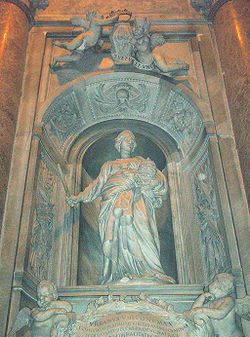 Matilda's death of gout in 1115 at Bondeno di Rocore marked the end of an era in Italian politics. She left her allodial property to the Pope for reasons not known. Henry had promised some of the cities in her territory he would appoint no successor after he deposed her. In her place the leading citizens of these cities took control, and we enter the era of the city-states in northern Italy.
Matilda's death of gout in 1115 at Bondeno di Rocore marked the end of an era in Italian politics. She left her allodial property to the Pope for reasons not known. Henry had promised some of the cities in her territory he would appoint no successor after he deposed her. In her place the leading citizens of these cities took control, and we enter the era of the city-states in northern Italy.
In the 17th century her body was removed to the Vatican, where it nowlies in St. Peter's Basilica.
To discover more on Matilda’s stories and to visit her burial monument see Vatican tour
- Details
- Guide Tips
Civitavecchia is a town and comune of the province of Rome in the central Italian region of Latium. A sea port on the Tyrrhenian Sea, it is located 80 kilometers west-north-west of Rome, across the Mignone river. The harbor is formed by two moles and a breakwater, on which is a lighthouse.
- Details
- Guide Tips
The euro is the legal tender for more than 325 million people in 16 EU countries. The symbol for the euro is €.
The euro notes are identical in all countries but each country issues its own coins with one common side and one side displaying a distinctive national emblem. All the notes and coins can be used in all EU countries that have adopted the euro, including many of their overseas entities, such as the Azores, the Canaries, Ceuta and Melilla, French Guiana, Guadeloupe, Madeira, Martinique, Mayotte, Réunion, and Saint Pierre and Miquelon.
Monaco, San Marino and Vatican City have adopted the euro as their national currency which also gives them the right to issue a certain number of euro coins with their own national sides. A number of countries and territories use the euro as their de facto currency such as Andorra, Kosovo and Montenegro.
Denmark, Sweden and the United Kingdom do not currently use the euro. Slovakia joined the euro area in January 2009 and the eight other countries that have entered the EU since 2004 are committed to adopting the euro when they are ready.
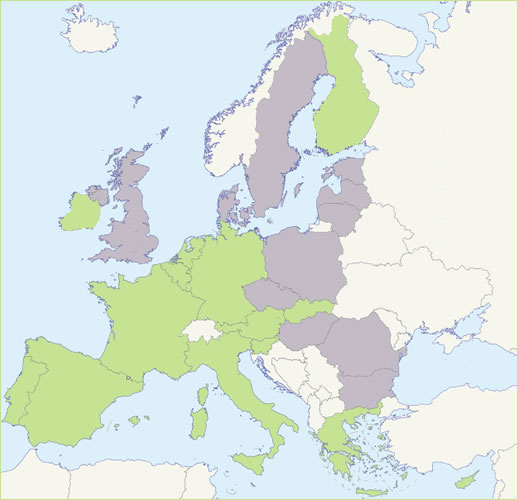
![]() EU countries using the euro: Austria, Belgium, Cyprus, Finland, France, Germany, Greece, Ireland, Italy, Luxembourg, Malta, the Netherlands, Portugal, Slovakia, Slovenia and Spain
EU countries using the euro: Austria, Belgium, Cyprus, Finland, France, Germany, Greece, Ireland, Italy, Luxembourg, Malta, the Netherlands, Portugal, Slovakia, Slovenia and Spain![]() EU countries not using the euro.
EU countries not using the euro.
Exchange rates
Rates will vary, but in September 2008 one euro bought approximately:
|
Country |
Currency |
Exchange rate |
|---|---|---|
| Bulgarian lev | 1.95 | |
| Czech koruna | 26.6 | |
| Danish krone | 7.45 | |
| Estonian kroon | 15.6 | |
| British pound sterling | 0.97 | |
| Hungarian forint | 266 | |
| Lithuanian litas | 3.45 | |
| Latvian lats | 0.70 | |
| Polish zloty | 4.14 | |
| Romanian leu | 4.02 | |
| Swedish krona | 10.95 | |
|
|
||
| Chinese renminbi-yuan | 9.63 | |
| Indian rupee | 67 | |
| Japanese yen | 127 | |
| Rouble | 41 | |
| US dollar | 1.41 | |
The latest exchange rates can be found at the European Central Bank website and there is a handy currency converter to help with calculations. In European countries outside the euro area many hotels, shops and restaurants, particularly in tourist areas, accept payment in euro as well as the national currency, although they are not legally obliged to do so.
Withdrawing money
Thanks to EU rules, withdrawing euro from a cash machine, making a card payment or a bank transfer in euro (up to €50 000) now costs you the same anywhere in the EU as it would cost you in your own country. These rules also apply to transactions on euro accounts in countries outside the euro area and to payments in Swedish krona.
The European banking industry, supported by the EU, is creating a Single Euro Payments Area to make all electronic payments across the euro area, whether by credit card, debit card, bank transfer or direct debit, as easy as a domestic payment.
Carrying cash
You can enter or leave the EU with up to €10 000 in cash without declaring it. Any larger amount of cash has to be declared to the customs authorities. These cash controls are aimed at fighting money-laundering and other criminal activities. Some member states apply cash controls to those travelling between EU countries.
- Details
- Guide Tips
Stay Safe
Rome is generally a safe place, even for women travelling alone. There is very little violent crime, but plenty of scams and pickpocketing which will target tourists. As in any big city, it is better if you don't look like a tourist: don't exhibit your camera or camcorder to all and sundry, and keep your money in a safe place
. Conscientiousness and vigilance are your best insurances for avoiding becoming a victim of a crime in Rome. Remember, if you are pickpocketed or another scam, don't be afraid to shout Aiuto, al ladro! (Help, Thief!). Romans will not be nice to the thief.
Members of the Italian public are likely to be sympathetic if you are a crime victim. Police are also generally friendly if not always helpful. Carabinieri (black uniform, red striped trousers) are military police, and Polizia (blue and grey uniform) are civilians, but they both do essentially the same thing and are equally good, or bad. If you are robbed, try to find a police station and report it. This is essential to establishing a secure travel insurance claim.
Rome is home to two rival Serie A football clubs, A.S. Roma and S.S. Lazio, and there is a history of conflict, and even rioting, between the two. If you dare to wear anything that supports either of them, especially during the Rome Derby (when the two clubs play each other), make sure you don't wander into supporters of the other club, or you may be subject to heckling or even confrontation. Play it safe and refrain from openly supporting either club unless you are very familiar with the rivalry. If you are a fan of a foreign team playing in Rome (especially against Roma) be very very careful as a number of supporters have been stabbed over the past few years purely for being foreign.
Pickpocketing
Being the incredibly popular tourist destination it is, some of pickpocketing and bag or purse-snatching takes place in Rome, especially in crowded locations, and pickpocketers in Rome can get pretty crafty.
As a rule, you should pretty much never carry anything very valuable in any pocket. The back pocket of your pants is one of the easiest & most common targets. Keeping your wallet in your front pocket or in your bag is far from safe. You should consider using a money belt and carry only the cash for the day in your pocket.
Also beware of bag-snatchers--one popular technique that purse-snatchers use is to ride by you on a moped, slice the strap with a knife and ride off. They might also try to cut the bottom of your bag open and pick your wallet from the ground. Others will use the old trick of one person trying to distract you (asking for a cigarette, doing a strange dance) while another thief picks your pockets from behind. Bands of gypsy kids will sometimes crowd you and reach for your pockets under the cover of newspapers or cardboard sheets.
Termini (the main railway station), Esquilino and bus line 64 (Termini to San Pietro) are well known for pick-pockets, so take extra care in these areas. In Metro pickpockets are extremely skilled.
Remember that hotel rooms are not safe places for valuables; if your room doesn't have a safe give them to the hotel staff for safekeeping.
You don't have to be totally paranoid, but be aware of the danger and take the usual precautions.
Tourist scams
Read up on the legends concerning tourist scams. Most of them occur regularly in Rome and you will want to see them coming.
A particular scam is when some plainclothes police will approach you, asking to look for "drug money," or ask to see your passport. This is a scam to take your money. You can scare them by asking for their ID. Guardia di Finanza (the grey uniformed ones) do customs work.
Currently there are two middle-aged men working near the Spanish Steps. They approach you, asking where you are from and begin to tie bracelets around your wrists. When they are done they will charge you upwards of €20 for each bracelet. There are also two men in their early twenties doing the same thing in the Piazza Navona. If anyone makes any attempt to reach for your hand, retract quickly. If you get trapped, you can refuse to pay, but this may not be wise if there are not many people around.
When taking a taxi, be sure to remember license number written on the card door. In seconds your taxi bill can raise by 5, 10 or more euros. When giving money to taxi driver, be careful.
Be careful of con-men who may approach you at tourist sights such as the Colosseum or Circus Maximus. Eg. a car may pull up next to you, and the driver ask you for directions to the Vatican. He will strike up a conversation with you while he sits in his car, and tell you he is a sales representative for a large French fashion house. He will then tell you he likes you and he would like to give you a gift of a coat worth several thousand euros. As you reach inside his car to take the bag the coat is in, he will ask you for €200 for gas, as his car is nearly empty. When you refuse, he could turn angry and now demand money from you, any money, of any currency. Don't fall for such confidence-tricks - if something sounds too good to be true, it is.
Tourist traps
Whenever you will book your tour in Rome with me or not, I would like to warn you on the following tourist traps in Rome, at the airport/station and its port.
I noticed the proliferation of the internet advertisements who promise the so called Driver-Guides or Chauffer-guide, but please note that these fellows are illegal in Italy.
Please remember that a driver is a driver ... and be aware of " driver guides " as they are not official tour guides of Rome as a real tour guide must be licensed by local authorities after the legal and public written and oral exams of tourist guide.
The drivers in this case are cheating you as they cannot operate as guides.
A Tour guide is fully trained to offer commentary on driving tours plus provide walking tours and tours inside historical sights and museums.
Emergencies
In an emergency call 112 (Carabinieri), 113 (Police), 118 (medical first aid) or 115 (firemen). Carry the address of your embassy or consulate.
- Details
- Guide Tips
Chiesa di Santa Maria in Palmis, better known as Chiesa del Domine Quo Vadis? is a small Church southeast of Rome. It is located about 800 m from St. Sebastian Gate (Porta San Sebastiano), where theVia Ardeatina branches off the Appian Way.
There has been a sanctuary on the spot since the 9th century, but the current church is from 1637. The current façade was added in the 17th century.
It has been supposed that the sanctuary might have been even more ancient, perhaps a Christian version of some already existing temple: the church is in fact located just in front of the sacred Campus dedicated to Rediculum, the "God of the return" (his name comes from the Latin verb redeo = to come back); this campus hosted a sanctuary for the cult of the god, that received devotion by travellers before their departure, specially by those who were going to face long and dangerous journeys, towards far places like Egypt, Greece or the East (and the travellers who returned, always stopped to thank the god of the happy outcome of the journey).
The position of the sanctuary in Campus Rediculi was not accidental, first of all because the ancient Appian way was the most important among the Roman "consular" roads, secondarily because from this location the traveller could give the last look to the walls of Rome. In the sacred field there was also the tomb of a famous talking crow, buried at the time of emperor Tiberius with a great popular funeral. Besides, the god Rediculum had a terrible reputation: a legend remembers that Hannibal, after the Battle of Cannae, arrived in front of the doors of Rome following this road; here the god appeared to him in a frightful way, in order to suggest retreating with all his army. This legend lets us suppose that Romans held Rediculum in deep consideration. At the moment we still do not know with precision where exactly the sanctuary was; however an error by some authors of 17th century caused many commonly to think still today that the temple of Rediculum was the sepulchre also said to be of Annia Regilla, toward the inner side of the Caffarella park.
The presence of the Apostle Peter in this area, where he is supposed to have lived, should however find a confirmation in an epigraph in the catacombs of Saint Sebastian, that recites "Domus Petri" (house of Peter) and in an epigram by Pope Damasus I (366-384), in honor of Peter and Paul, in which we can read: "You that are looking for the names of Peter and Paul, You must know that the saints have lived here".
The two footprints on a marble slab at the center of the church (copy of a relief conserved in the near basilica of San Sebastiano) would be the miraculous sign left by Jesus: it is actually a draft of an "ex voto" paid for the good outcome of a travel, what would confirm the supposition that some connection might link the two temples.
The real name of the church, very little known, indeed, is Chiesa di Santa Maria in Palmis, where palmis stands for the soles of Jesus.
It has to be noted that the Roman Catholic Church admits the legend, after Pope Innocent III declared the fact was true; his decree is included in the Decretali di Gregorio IX book IV, tit. 17, cap. Per Venerabilem.
There was an inscription above the front door on the façade, saying: "Stop your walking, traveller, and enter this sacred temple in which you will find the footprint of our Lord Jesus Christ when He met with St. Peter who escaped from the prison. An elemosina for the wax and the oil is recommended in order to free some spirits from Purgatory". Pope Gregory XVI found it so inappropriate (effectively being a sort of advertising) that he ordered its removal in 1845.
In 1983 Pope John Paul II defined the church "a place that has a special importance in the history of Rome and in the history of the Church".
The precise address is: Via Appia Antica, 51.
- Details
- Music
Read more: Gibberish rock song written by Italian composer to sound like English
- Details
- Music

CANTI DELLA TRADIZIONE NATALIZIA ITALIANA
BUON ASCOLTO!
- Details
- Music
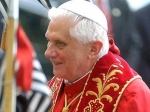 Pope Benedict XVI is to release a CD of songs, prayers and music in time for Christmas, the Vatican said Friday.
Pope Benedict XVI is to release a CD of songs, prayers and music in time for Christmas, the Vatican said Friday.
The CD is to be released on the Geffen UK label, whose parent company Interscope-Geffen-A&M is better known for stars such as Eminem, Guns N` Roses and the Pussycat Dolls.
But the pontiff did not spend time in a recording studio laying down tracks for the album, the Vatican was quick to explain.
Vatican Spokesman Federico Lombardi said Benedict`s songs and prayers were taken from the archives of Vatican Radio and the pope had had no direct relationship with the record label.
Lombardi said Vatican Radio had made available eight tracks of the pope giving sermons and prayers in different languages for a total of ten minutes, which Geffen Records have mixed to music.
According to British daily The Guardian, Benedict will be singing a Marian prayer and reciting litanies in Italian, Portuguese, French and German to the accompaniment of eight pieces of modern classical music specially composed for the album.
The paper said the CD would be entitled Alma Mater and would be released on November 30 ``in time for the Christmas rush``, while some profits would go to children`s charities.
Benedict`s predecessor, John Paul II, also released a similar CD, consisting of him singing chants and reciting prayers over various musical backgrounds.
The album, Abba Pater, sold a million copies in three days when it was released in 1999.





